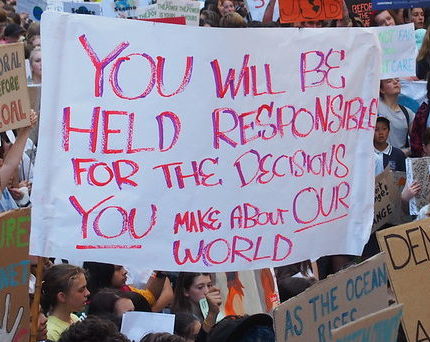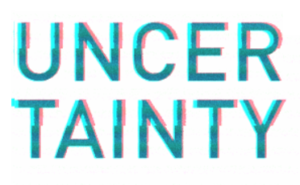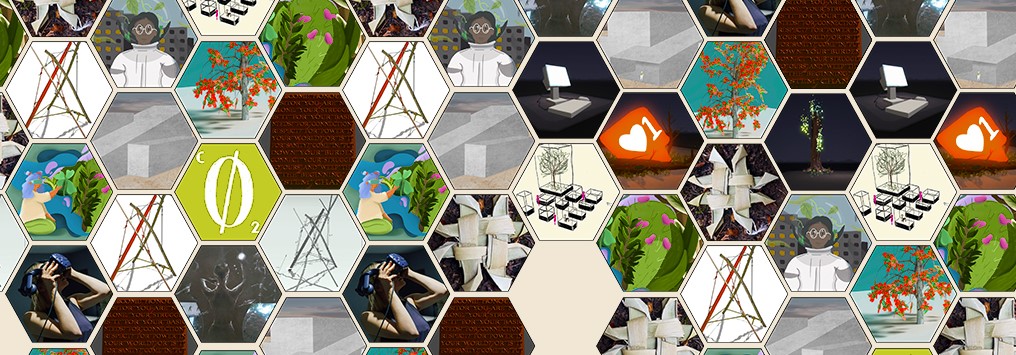By Martin Mahony and Silke Beck
Sticky imaginaries, shifting frames, irreducible incertitude . . . the recent Politics of Uncertainty symposium gave us much to reflect upon in the context of recent shifts in the politics of global climate change, and what they might mean for the relationship between knowledge and action.
Cluster 2 of the symposium covered a lot of diverse ground – from technology regulation and infrastructural reliability to experimental cities and the everyday uncertainties of life under austerity. The overarching focus on the politics of uncertainty proved generative in prompting the room to work through how uncertainty can be a natural condition of things, rather than something that can be straightforwardly overcome by its opposites – certainty and control.
Yet, while uncertainty may be the norm rather than the exception across these different social and technological worlds, there is a risk in naturalising it too much, and thus losing sight of how conditions of uncertainty, or incertitude, are spread unevenly across societies, and how the power to live well and to flourish in conditions of uncertainty is a luxury that not everybody can claim.
One of the recurring themes of the discussion was the multiple connections between uncertainty and imagination. Fern Wickson made the point early on that uncertainty can be considered the recognition that things could be otherwise; uncertainty can therefore be generative of imagined alternatives, as well as a recognition that promises of perfect control – over infrastructures, environments, peoples – always are a chimera.
The stickiness of imaginaries
Many of the reflections nonetheless centred on what Andy Stirling would later refer to as the ‘stickiness’ of imagined futures. Big-picture visions of societies transformed through technological change (what Jasanoff and Kim would call ‘sociotechnical imaginaries’) profoundly shape how different actors think about the future and seek to bring certain versions of it into being. Powerful visions stick around, even after they may have been thoroughly debunked or deconstructed (David Edgerton’s The Shock of The Old, recently out in a new edition, is a great account of how historically and sociologically naïve much technological boosterism proves to be).
These imaginaries might even be said to become infrastructural – part of the unspoken, taken-for-granted equipment that keeps societies chugging along, useful myths around which social and political collectives gather and act; but perhaps they also serve to blind us to alternatives.
Between official and unofficial futures
Thinking about the long term – through complex scientific models or sophisticated visioning exercises – is often a feature of ‘official’ accounts of futures and their uncertainties. More quotidian, everyday practices of addressing the future sometimes are taken to be concerned with the short term. How do these different modes of addressing the future interact? Does focusing our analytical attention on ‘official’ constructions of long-term futures mean we miss alternative, more everyday forms, such as the everyday utopias, and quotidian imaginaries of different worlds? The ongoing politics of Brexit make for an important case study in the politics which appear in the gaps between official and unofficial futures, and how the uncertainties of each become the sites where new political collectives are articulated.
Radical imaginaries and global climate policy
In our recent work on climate politics we’ve been thinking about the stickiness of certain futures, particularly ideas about how negative emissions technologies (NETs) can help the world achieve net-zero CO2 emissions. It seems that certain hopes or promises about the availability of such technologies in the future have become part of the imaginative infrastructure of global climate policy, possibly distracting from alternative futures where more radical overhauls of economic systems pull emissions down in different ways (on this, see this recent debate between Kevin Anderson and Jessica Jewell). NETs fit neatly within a dominant framing of climate change mitigation, which suggests that sufficient emission avoidance can be achieved without challenging the fundamental tenets of contemporary economics, nor challenging the (radically unequal) distribution of power and money.
With this in mind, we were stirred by Andy Stirling’s call to rethink the meaning of emancipation, as being a form of liberation from the dominant frames in which problems and issues (like climate change) are addressed and managed. Increasingly, the official futures of climate change are being challenged by new framings from below.

The School Strikes movement and Extinction Rebellion (XR), while still basing their claims very much on a sense that the science can tell us what to do, have also succeeded, we would suggest, in pushing new frames. The young strikers in particular have helped reposition climate change as an issue of intergenerational justice, while XR has helped push more radical ideas – such as degrowth – up the political agenda. These are much more radical, unofficial imaginaries of what the future might look like – imaginaries which are already shaping the day-to-day choices and actions of various publics.
Who gets to imagine the future?
Does this upsurge in activism mean we are slowly being liberated from the dominant framings within which climate politics have been conducted to date? Maybe – it’s interesting to see, for example, that integrated assessment modellers, who conduct the authoritative assessments of mitigation pathways for the IPCC, are starting to explore versions of degrowth futures in their models. Scientific methods (especially GCMs and IAMs) are techniques for constructing futures that create certain narratives and imaginaries. Future imaginaries are inherently selective constructions, wherever they come from, and however they’re made. It’s thus important to ask who gets to imagine the future, and how do certain ways of constructing futures gain and maintain epistemic and political authority? What are the societal consequences of dominant future expectations?
The call by XR for Citizens’ Assemblies on climate change represents a recognition that the modes of political representation around which liberal democracies have been built can no longer cope with the need for climate politics to bring into account a range of ‘others’ – nonhumans, distant planetary neighbours, unborn multitudes. Bringing these others into the space of political deliberation will also require diverse ways of calculating and imagining the future. What will the ‘science-policy interface’ look like when the ‘audience’ is not just regular policymakers, but citizens who have been assembled to assess a wider range of options than most policymakers would ever entertain?
Technologies of humility for navigating uncertainties
Andy Stirling remarked that the emancipation from dominant frames creates its own uncertainties, not least for the institutions which may have been central to working with and for those existing frames. In the case of the IPCC, how would modelling degrowth sit with its norms of being ‘policy relevant’ but not ‘policy prescriptive’? The United Nations’ ambitions to address the plural space of the future historically collided with a willingness, on behalf of forceful actors from both science and policymaking communities, to achieve consensus on highly selective pathways, in what can only be described as a narrowing of the discursive space of the future (see Andersson 2018).
But what does it mean to be ‘relevant’ to policy, when what it is possible to say politically about the future, and how we get there, is itself highly uncertain, and may be changing rapidly in ways which many powerful actors may not like?
A more cacophonous politics of climate change means that institutions like the IPCC and the UNFCCC are subject to new, emergent publics, brought into being by new framings of the issue at hand. That may require new ways of thinking about how such institutions are held accountable for the ways in which they navigate uncertainties on our behalf. Techniques like machine learning have been advocated as one way of aggregating knowledge and assessing uncertainty, but we would urge caution against the idea that uncertainties can be rationally managed and reduced. Most of the uncertainties relevant to reckoning with climate futures exist in the much more ambiguous space between the multiple futures we can foresee and the futures we want. Technologies of humility are needed to address those uncertainties in open, democratic ways.
Finally, as Sheila Jasanoff put it on the day, ultimately this all comes down to how we choose to know ourselves. What are the forms of knowledge and expertise to which we defer, and from where do they come? How are these forms of knowledge held accountable for their handling of what Brian Wynne distinguished as both implicit and explicit uncertainties? An emancipation from dominant frames of reference implies a revolution in how we seek to make reliable, usable knowledge about societies and their futures.
This is one of a series of blog posts by participants following the STEPS symposium The Politics of Uncertainty: Practical Challenges for Transformative Action.
ABOUT THE AUTHORS
Martin Mahony is Lecturer in Human Geography, School of Environmental Sciences at the University of East Anglia.
Silke Beck is Deputy Head of the Department of Environmental Politics at the Helmholtz Centre for Environmental Research – UFZ

Uncertainties can make it hard to plan ahead. But recognising them can help to reveal new questions and choices. What kinds of uncertainty are there, why do they matter for sustainability, and what ideas, approaches and methods can help us to respond to them?
Find out more about our theme for 2019 on our Uncertainty theme page.
